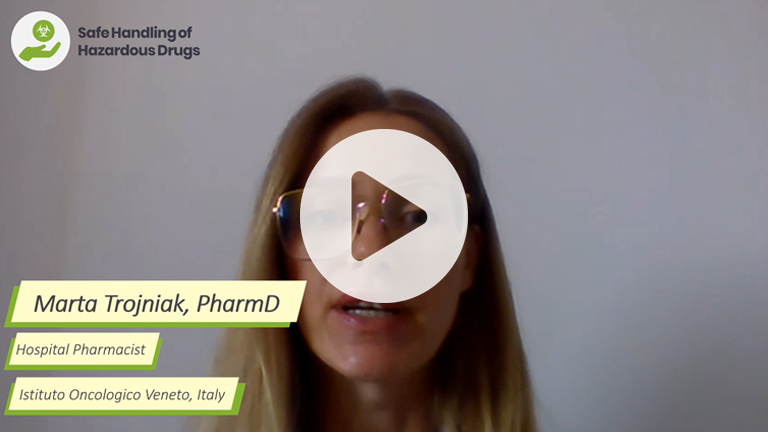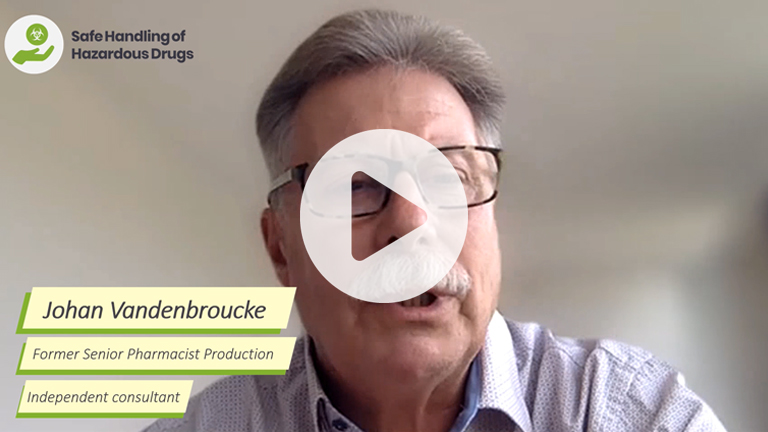OTHER RESOURCES
KEY PAPER EVALUATION
Engineering controls for the safe administration of hazardous drugsEXPERT OPINION
Hazardous drug exposure of healthcare workersClearing up the confusion – closed systems versus CSTDs
Hazardous drugs (HD) handling can potentially harm healthcare workers who are involved in compounding, transfer to IV bags and administration.1 Safe working practices including engineering controls are essential for reducing this risk, and employers are responsible for ensuring the use of personal protective equipment (PPE) and appropriate procedures for the handling of HD by their employees.2
The use of closed system drug transfer devices (CSTDs) as engineering controls began in 1999,1 and since the US Pharmacopeia (USP) published USP <800>, they have become mandatory during administration of HDs, and recommended during compounding.3 Healthcare professionals working with HDs have likely encountered CSTDs, however it seems that there is confusion surrounding the differences between a ‘closed system’ and a CSTD for the safe handling of HDs. Last month we asked SHHD subscribers to participate in a survey about their knowledge of CSTDs. When asked to select the correct definition of a CSTD, approximately 15% did not know the definition, and around 85% did not know that they are required during administration of HDs.
So, what IS the difference between a closed system and a CSTD?
Closed systems are medical devices that can contain air or fluid leakage and do not exchange unfiltered air or contaminants with the adjacent environment.4 They need to meet construction criteria, but performance standards are not in place to validate their ability to eliminate environmental hazards. Closed systems make up both primary and secondary engineering controls such as biological safety cabinets (BSC) and cleanrooms, and are designed to protect medication, the user, and the environment.5
The National Institute for Occupational Safety and Health (NIOSH) describes a CSTD as ‘a drug transfer device that mechanically prohibits the transfer of environmental contaminants into the system and the escape of hazardous drug or vapor concentrations outside the system’.2 CSTDs are supplemental controls, meaning that they offer additional levels of protection during compounding and administration of drugs, but they are not a substitute for the use of primary and secondary engineering controls.5 One type of CSTD utilises a needle-free pathway that when connected provides a channel for drug and vapour transfer, but is closed and sealed when disconnected.6 A second type of CSTD creates a seal through use of adjacent membranes, which are pierced by a needle to equalise the pressure in the medication chamber and the syringe to allow removal of drugs and vapours. Once disengaged, HD residue is removed from the needles and stored in the system.6 Additionally, the air from CSTDs is either filtered or contained by a physical barrier (e.g., balloon or closed chamber).7
We have created a short infographic to help illustrate the differences between closed systems and CSTDs, which can be found here.
A 2022 study confirmed that using a CSTD system during compounding significantly reduced exposures of HDs in the BSC area and on PPE, compared to the traditional needle and syringe technique.8 Under the compounding technique using a CSTD, cyclophosphamide contamination in the medial glass of the BSC reduced by 67.7%, and cytarabine contamination in the air-intake vent reduced by 69.6%.8 When PPE was analysed, masks and gloves worn by pharmacists showed that under CSTD use, there was a 48.2% and 50% reduction in cyclophosphamide contamination, and for cytarabine, there was an 18% and 42.4% reduction respectively.8
Despite being easily confused, closed systems and closed system drug transfer devices are not the same, as closed systems do not offer the same level of environmental protection. It is important to understand that where procedures mandate the use of closed systems, CSTDs must be used alongside primary and secondary engineering controls. Any person who handles HDs should understand what a CSTD is and how they can be used effectively alongside other protective measures, given the significant safety benefits that they offer.
References
- Massoomi, F. The Evolution of the CSTD. Oncology Safety. (2015) 12(2)
- NIOSH. Preventing Occupational Exposures to Antineoplastic and Other Hazardous Drugs in Health Care Settings. (2004) Available at: https://www.cdc.gov/niosh/docs/2004-165/pdfs/2004-165.pdf.
- National Institute for Occupational Safety and Health. NIOSH list of antineoplastic and other hazardous drugs in healthcare settings. (2016) Department of Health and Human Services. Publication Number 161. Available at: https://www.cdc.gov/niosh/docs/2016-161/pdfs/2016-161.pdf
- Nygren O, Olofsson E, Johannson L. Niosh definition of closed-system drug transfer devices. Ann Occup Hyg. 2009. 53(5):549
- United States Pharmacopoeia. General Chapter <800> Hazardous Drugs – Handling in Healthcare Settings. 2017. Available at: https://www.usp.org/sites/default/files/usp/document/our-work/healthcare-quality-safety/general-chapter-800.pdf
- Piccardo MT, Forlani A, Izzotti A. Effectiveness of Closed System Drug Transfer Devices in Reducing Leakage during Antineoplastic Drugs Compounding. Int J Environ Res Public Health. 2021 Jul 28;18(15):7957
- Amichay M, Shimon O, Raveh E. Prevention of coronavirus contamination from the environment using an air-cleaning closed system drug-transfer device. Pharm Pract (Granada). 2021 Oct-Dec;19(4):2576.
- Tang Y, Che X, Wang YL, Ye X, Cao WL, Wang Y. Evaluation of Closed System Transfer Devices in Preventing Chemotherapy Agents Contamination During Compounding Process-A Single and Comparative Study in China. Front Public Health. 2022 Apr 18;10:827835.
- UK Health and Safety Executive. Safe handling of cytotoxic drugs in the workplace. Available at: https://www.hse.gov.uk/healthservices/safe-use-cytotoxic-drugs.htm#:~:text=use%20totally%20enclosed%20systems%20where,achieved%20by%20other%20measures%20alone.
Want to learn more about surface contamination? Check out these learning modules
Safe preparation and administration of hazardous drugs
Restricted content
Compare how the “do’s and don’ts” of hazardous drug handling differ across Europe and discover how international directives could impact your working practice with this module. Watch Marta Trojniak introduce her updated module.
Restricted content
Some drugs are more hazardous than others, and appropriate levels of protection must be deployed by hospital employees responsible for ensuring safety. Watch Johan Vandenbroucke as he introduces this module about risk management strategies.

